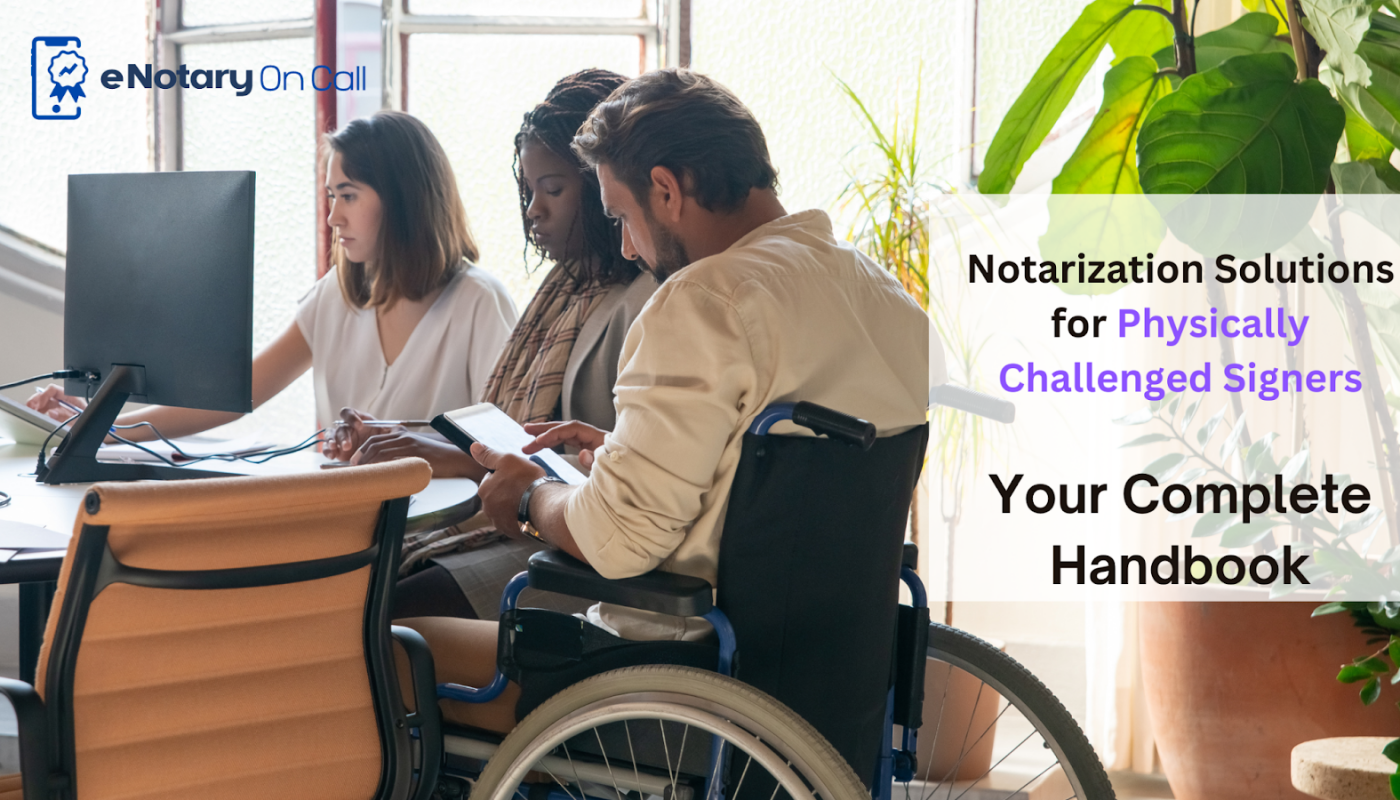Many notary professionals encounter scenarios where an individual’s physical condition prevents them from providing a signature, which can be challenging. However, various alternative methods are available to facilitate notarization in such cases, and these methods vary from state to state.
Below are the ways to perform a notarization for Physically Impaired signers. So, let’s explore these approaches in detail.
1. Powers of Attorney and Representative Signers
In certain situations, an individual may grant power of attorney to another person to sign documents on their behalf when they are physically incapable of doing so. This person is known as a “representative signer”. And, in some jurisdictions, “attorney in fact.” It’s important to note that this representative need not be an attorney.
When notarizing for a representative signer, the process generally follows standard notarization procedures. Their names would be entered in the Notary certificate once they presented proof of identity. However, keep in mind that a representative signer typically lacks the authority to administer an oath or affirmation on behalf of the physically impaired individual.
Specific states, such as Colorado and Nevada, require specialized certificate wording for notarizations involving representative signers. In states like Oregon, Hawaii, Montana, and Utah, the representative signer must provide evidence of their authorization to sign on behalf of the disabled individual.
It’s worth noting that, except in Illinois, a representative signer does not have the ability to administer an oath or affirmation for another person. Nonetheless, they may be able to affirm the accuracy of the document’s contents without asserting the overall truthfulness of the document.
2. Signature by Mark
When a physically impaired signer is coherent and willing to participate, the signature by mark approach can be employed. This method involves the individual making a distinctive mark, such as an ‘X,’ in the presence of witnesses, which can then be notarized.
When employing a signature by mark, the individual isn’t required to write out their full name; rather, they create an ‘X’ or a similar mark in the presence of witnesses. This marked sign is subsequently eligible for notarization. States may require one or two witnesses depending on their rules and regulations.
Before implementing the signature by mark approach, check the specific guidelines in your state. For instance, California and Michigan mandate the presence of two witnesses during this process. In California, witness identification is not necessary unless witnesses are also acting as credible identifiers of the signer’s identity.
During a signature by mark, it’s crucial that the individual is able to make the mark independently, without any physical assistance. Requests to guide or hold the signer’s hand should be declined.
3. Assisted Signing by a Designated Individual/Proxy
In cases where an individual is incapable of making any mark, some states permit the Notary or another authorized individual to sign the document as directed by the customer. This practice is commonly referred to as “signature by proxy.” In Florida, for example, if a physically impaired person wishes the Notary to sign on their behalf, the signing must occur in the disabled person’s presence, with two impartial witnesses present. Texas allows Notaries to sign on behalf of disabled individuals, with one disinterested witness required.
It’s important to ascertain the legality and appropriate procedure for signature by proxy before proceeding, as its acceptance varies among states.
How is the Notarization Process Executed for Signers Who Are Physically Impaired?
Whether utilizing a representative signer, employing a signature by mark, or opting for a proxy, numerous fundamental notarization prerequisites will remain consistent. There are five essential components essential for the completion of a notarial act:
- All signatories and required witnesses must be physically present.
- The document’s identity and completeness must be verified, with no void spaces or pages.
- Signatories’ identities must be authenticated. Also, ensure that they’re signing of their own free will.
- In certain jurisdictions, the transaction must be recorded in the notary journal, and
- The notarial seal and certification must be affixed.
Final Note
Attention Notaries! If you are in a circumstance where an individual’s physical condition prevents them from providing a signature, there’s no need to worry. You are equipped with various alternatives to successfully carry out the notarization process:
- Powers Of Attorney and Representative Signers
- Signatures By Mark
- Enlisting someone else to sign under the impaired person’s guidance
Notarizing documents for physically impaired individuals requires a specific approach based on particular situations. Thoroughly understand your state’s regulations and select the appropriate method to ensure a smooth and legally sound notarization process.
Looking to upsurge your notary business instantly? Look no further—have you considered integrating eNotary On Call’s cutting-edge Remote Online Notary Service? If not, it’s time to discover how our avant-garde platform can empower your business and elevate your notary services to the next level by expanding your reach and enriching client convenience. Start Now!



